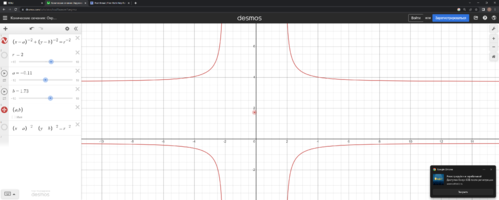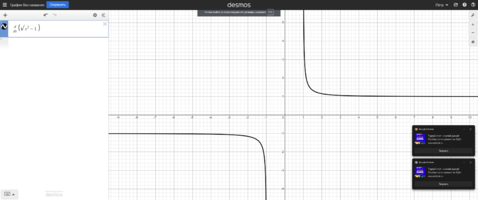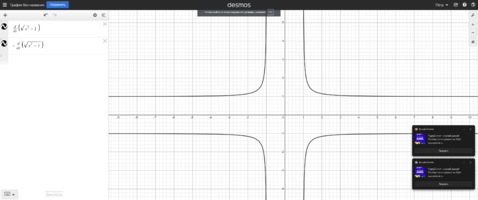Boi
New member
- Joined
- Feb 14, 2023
- Messages
- 30
I was messing around in Desmos when a strange thought came into my head: "What if i write formula for circle centred at point (h, k) but instead of 2 in (x-h)^2+(y-k)^2
I use -2?" So I wrote it and it got me a bit strange shape. Does anyone know how this shape is called? Is this also a section of some 3D solid? Please point me towards some paper about it if you know any
P.S. sorry for my bad english

I use -2?" So I wrote it and it got me a bit strange shape. Does anyone know how this shape is called? Is this also a section of some 3D solid? Please point me towards some paper about it if you know any
P.S. sorry for my bad english



